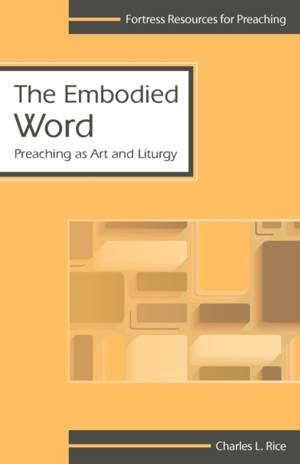
- Afhalen na 1 uur in een winkel met voorraad
- Gratis thuislevering in België vanaf € 30
- Ruim aanbod met 7 miljoen producten
- Afhalen na 1 uur in een winkel met voorraad
- Gratis thuislevering in België vanaf € 30
- Ruim aanbod met 7 miljoen producten
Zoeken
€ 25,95
+ 51 punten
Omschrijving
Preaching as art and liturgy- Liturgy as the work of God's people gives the preacher a place to stand-an organic connection with an intentional sacramental community, says Rice. The place of preaching is the community, Christ's body, and the hermeneutic that governs homiletical exegesis, style, and presentation comes from the liturgical situation of the sermon. The Embodied Word puts preaching in its proper place-in the presence of the baptistry and close to the table. As Rice explores the implications of that placement for the specific concerns of homiletics, the use of Scripture, and the appropriation of the arts, he concludes that the movement of the sermon is from text to table and that the action of the liturgy both depends upon and empowers the word. Charles L. Rice is Professor of Homiletics Emeritus at Drew University in Madison, New Jersey, and an Episcopal priest. One of the most acclaimed pioneers of the "new homiletic," he is the author of Preaching the Story (1980) and Interpretation and Imagination: The Preacher and Contemporary Literature (1970), both from Fortress Press.
Specificaties
Betrokkenen
- Auteur(s):
- Uitgeverij:
Inhoud
- Aantal bladzijden:
- 144
- Taal:
- Engels
- Reeks:
Eigenschappen
- Productcode (EAN):
- 9780800624538
- Verschijningsdatum:
- 1/04/2010
- Uitvoering:
- Paperback
- Formaat:
- Trade paperback (VS)
- Afmetingen:
- 140 mm x 216 mm
- Gewicht:
- 176 g

Alleen bij Standaard Boekhandel
+ 51 punten op je klantenkaart van Standaard Boekhandel
Beoordelingen
We publiceren alleen reviews die voldoen aan de voorwaarden voor reviews. Bekijk onze voorwaarden voor reviews.











